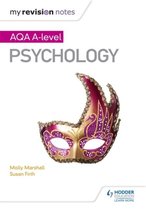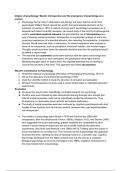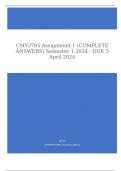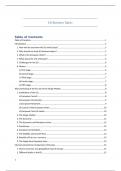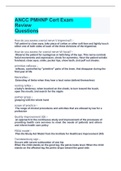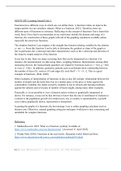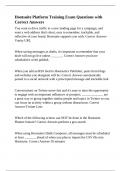science
● Psychology had its roots in philosophy and biology, but when German doctor and
psychologist William Wundt opened the world's first experimental laboratory at the
university of Leipzig in 1879, it marked a turning point: psychology's emergence as a
separate and distinct scientific discipline. He moved study of the mind from philosophical
roots to controlled empirical research. He promoted the use of introspection as a
way of studying mental processes. Introspection is a systematic analysis of one’s own
conscious experiences of a standard stimulus, then reporting the experience. A standard
stimulus Wundt used was often a metronome. An inward experience was analysed in
terms of its components, such as sensations, emotional reaction, and mental images.
Thoughts would be broken down into separate elements and then the participant would
be asked to report these.
● The research was systematic as the same stimulus with the same surroundings and
instructions were given to each participant, and participants were highly trained.
Breaking thoughts about an object down into separate elements was an attempt to
uncover the structure of the mind. This approach was called structuralism.
Wundt’s contribution to Psychology:
● Wrote first textbook of psychology (Principles of Physiological Psychology, 1873-4)
● Set up first laboratory of experimental psychology (1875)
● Used the scientific method to study the structure of sensation and perception
● Showed that introspection could be used to study mental states in replicable laboratory
experiments.
Evaluation
★ He paved the way for later scientifically controlled research into psychology
★ Wundt’s work was criticised by later behaviourist learning theorists who thought that
internal mental processes could not be scientifically studied by introspection. They
focused only on observable inputs (stimuli) and outputs (behaviour).
★ The study of mental processes was later continued by cognitive psychologists who built
models of how systems such as memory worked. However they used experimentation,
not introspection.
● The timeline of psychology goes Wundt in 1879 and Freud at the 1890s with
introspection, then the behaviourists Pavlov (1890s), Watson (1913), and Skinner (1940)
who suggested that to give psychology greater credibility and comparable to other
science it should measure objectively and use scientific methods like laboratory
experiments, then there was Bandura in the 1960s with SLT talking about the impact of
social interactions on our behaviour. The humanist school of psychology also appeared
at around this time, rejecting the idea of studying humans in a scientific way. Cognitive
psychology developed from the 1960s onwards and see the mind as a computer.
Biological psychology as we know it emerged in the 1990s. Cognitive neuroscience is
the most modern form of psychology.
,Learning approaches: the behaviourist approach, including classical conditioning and
Pavlov’s research, operant conditioning, types of reinforcement and Skinner’s research;
Behaviorism
Assumptions:
● All behaviors are learnt from our environment.
● Focus on observable behavior (behavior that can be seen).
● Animals and humans learn in the same ways so behaviorists carry out experiments on
animals and extrapolate the results to humans.
● Psychology should be scientific and the only things that could be objectively measured
were the stimulus (input) and response (output), therefore behaviorists use mainly
laboratory experiments to achieve this.
● To behaviourists directly measuring the mind was untestable due to being subject to bias
★ Classical conditioning: learning by association- Watson and Rayner (1920) used a
9 month old baby boy in an experiment to show the importance of the environment over
instinct for learning and behaviour. When shown a range of stimuli (fire, monkeys, dogs
..etc) Little Albert showed no fear response. A white rat would be presented to Albert,
paired with a metal bar being hit behind his head to make a loud noise. After a few
presentations Albert developed a fear response to the rat, which then generalised to
anything fluffy or white (fur coat, dog, santa mask). So Watson found that you could
condition a fear response into a baby purely by using the environment.
➔ Classical conditioning is learning through association and was first demonstrated by Ivan
Pavlov. Pavlov (1927) showed that dogs could be conditioned to salivate at the sound of
a bell if that sound was repeatedly presented at the same time that they were given food.
➔ First the dogs were presented with the food, they salivated. The food was the
unconditioned stimulus and salivation was an unconditioned (innate) response.
➔ Then Pavlov sounded the bell (neutral stimulus) before giving the food. The bell and the
food had a temporal association because the two stimuli were experienced close
together in time, so an association was formed. After a few pairings the dogs salivated
when they heard the bell even when no food was given. The bell had become the
conditioned stimulus and salivation had become the conditioned response.
➔ The dogs had learnt to associate the bell with the food and and salivation was triggered
by the sound of the bell.
● Operant conditioning: learning by consequences- Skinner argued that learning is an
active process. When humans and animals act on and in their environment
consequences follow these behaviors. If the consequences are pleasant they repeat the
behavior but if the consequences are unpleasant they do not repeat the behavior.
● Positive reinforcement: is receiving a reward.
● Negative reinforcement: occurs when performing an action stops something
unpleasant happening. For example in one of Skinner’s experiment a rat had to press a
lever to stop receiving an electric shock.
, ● Punishment: this is an unpleasant consequence. Positive punishment is adding
something unpleasant, and negative consequence is removing something pleasant.
● Extinction occurs when a behaviour that was previously reinforced stops being
reinforced and so gradually stops happening.
● Primary reinforcers such as food, water and sleep don’t need pairing with another
stimulus to be reinforcing
● Secondary reinforcement is when an idea or action is reinforced by a primary
reinforcer (i.e: money can buy food)
● Intermittent reinforcement is when behaviour isn’t reinforced every time it happens.
Some behaviours like gambling or slot machines follow a variable ratio rule of winning
every few times, but not in a predictable pattern, resulting in behaviours that are
compulsive and very resistant to extinction.
➔ The Skinner Box (1953)- A hungry rat was placed in a cage. Every time he activated
the lever a food pellet fell in the food dispenser (positive reinforcement). The rats quickly
learnt to go straight to the lever after a few times of being put in the box
➔ This suggests that positive reinforcement increases the likelihood of the behavior being
repeated.
➔ In another experiment, a rat was placed in a cage in which they were subjected to an
uncomfortable electrical current as he moved around the cage the rat hit the lever, this
immediately switched off the electrical current (negative reinforcement). The rats quickly
learnt to go straight to the lever after a few times of being put in the box.
➔ This suggests that negative reinforcement increases the likelihood of the behavior being
repeated. This experiment was an example of shaping, as Skinner reinforced successive
approximations to get to the final target behaviour (i.e: every time the rat pulled the lever
it was given food, even before it had figured out the association).
Applications
● Behaviorism has increased our understanding of the causes of phobias and attachment.
It allows us to develop laws and principles by which to predict and control human
behaviour, giving rise to therapies such as systematic desensitisation and token
economy.
Evaluation
★ Behaviorism has experimental support: Pavlov showed that classical conditioning leads
to learning by association. Watson and Rayner showed that phobias can be learnt
through classical conditioning in the “little Albert” experiment.
★ It introduced the scientific methods to psychology. Laboratory experiments were used
with high control of extraneous variables. These experiments were replicable and the
data obtained was objective (not influenced by an individual’s judgement or opinion) and
measurable. This gave psychology more credibility.
★ Many of the experiments carried out were done on animals; we are different cognitively
and physiologically, humans have different social norms and moral values these mediate
the effects of the environment therefore we might behave differently from animals so the
laws and principles derived from these experiments might apply more to animals than to
humans.

